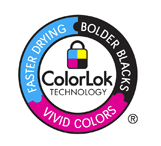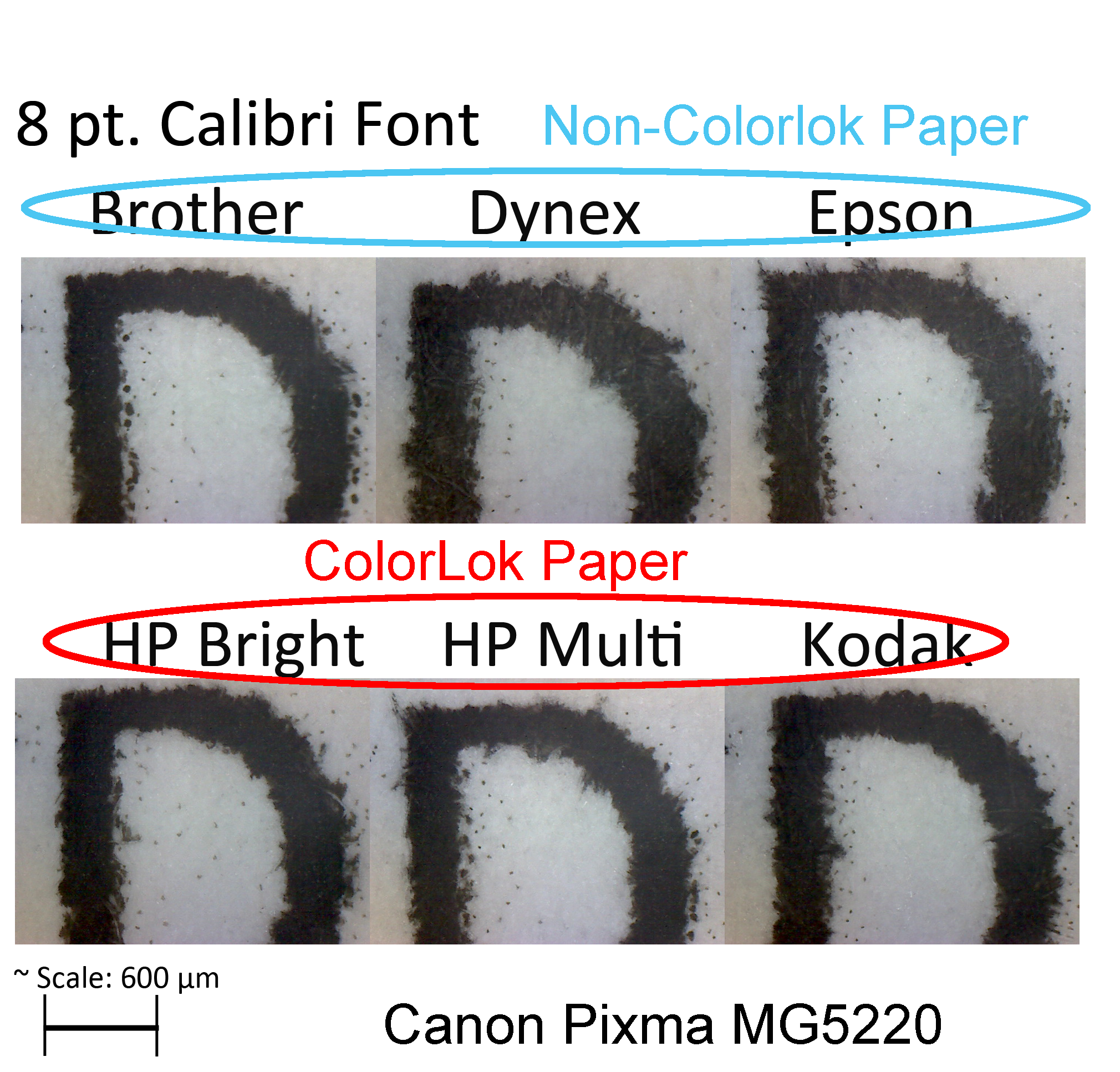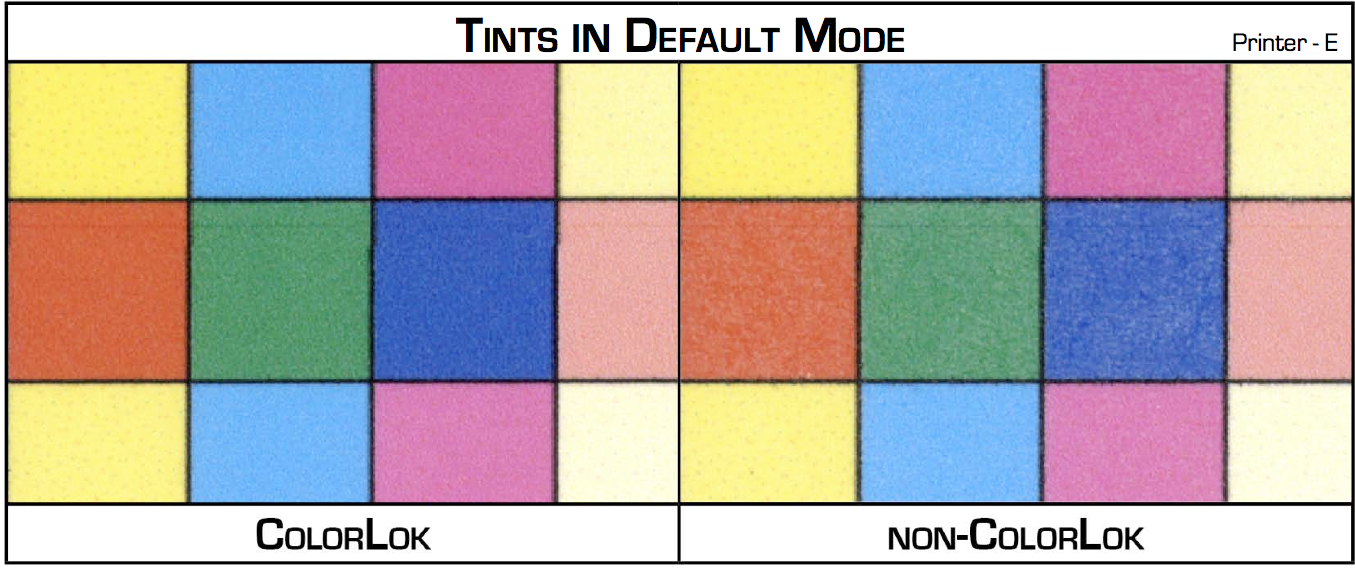Picking The Best Ink And Paper For Your Inkjet Printer
Matte Paper: Look For ColorLok
Matte Paper
Whether you use cheaper third-party inks or your printer's official brand, the results can vary greatly depending on the paper you use. In general, there are two paper types: matte and photo paper. The former is the stuff you use on a day-to-day basis because it's cheaper.
Between brands, the differences are few, but if you're an Epson, HP, or Kodak customer, you should definitely find a matte paper with the ColorLok logo.
ColorLok makes your prints look better, even on plain paper. Paper with this logo has been pretreated with a solution that allows colors to look more vivid; blacks seem deeper and images appear sharper because of less horizontal bleed. This is especially true if your printer uses pigment-based inks. And if you enjoy printing double-sided pages, you'll find that you get next to no bleed-through, regardless of paper thickness.
The picture above demonstrates ColorLok in action. We used generic craft paper and placed a drop of ColorLok solution on the surface. Then, we added a drop of black pigment ink on top and did the same to an area of the paper without ColorLok. When you flip the paper over, you can see the difference. Even though we're only using cheap craft paper, ColorLok holds the pigment higher on the surface and reacts with the ink, causing it to dry faster.
Even if you own a printer brand other than HP, Epson, or Kodak, you should see some gains with ColorLok. The picture above shows the printing results from a Canon MG5220 on various matte papers. Notice how the text appears darker and sharper on the ColorLok-treated papers.
As a general rule of thumb, ColorLok helps increase ink saturation, which results in more vivid colors.
Get Tom's Hardware's best news and in-depth reviews, straight to your inbox.
Current page: Matte Paper: Look For ColorLok
Prev Page Your Cheat Sheet For The Best Prints Next Page Deciphering Photo Paper-
mayankleoboy1 the most interesting thing in this article was the B&W sunlight photo on the third page. awesome photo. can we have some more?Reply -
cmcghee358 I'm not gonna lie, I didn't read this. I read probably 90% of Toms articles because even though they are technical, they are still interesting. The title of this simply turned me off.Reply -
kalidasa Thanks for telling me how I can find my own quality inks and paper for printing. Now I can spend hundreds of dollars testing out the "thousands", as you put it, of third-party suppliers of printing materials.Reply
paraphrase of this article: We don't endorse buying first party, brand-name inks and paper; we're just here to tell you the extremes you can go through to find an alternative! p.s. HP is great! -
iam2thecrowe there is only one simple answer to "what is the best ink/paper for my printer". The answer is only the manufacturer of the printer makes the correct ink that and paper suitable for the printer that will yield consistantly good results for photos and prevent the head from getting clogged. The manufacturer pre-sets settings in the driver to deliver the right amount of a particular ink to a particular weight/absorbancy of paper. Use those presets with other paper/ink and you will get varied results. When you work fixing printers for a few years you will understand this is fact, not just manufacturers trying to sell overpriced ink. And you also have to remember that overpriced ink is there to make up for the losses they make on low end $50 printers.Reply -
TonyJ No mention of Ilford paper and Hobbicolor ink. Very basic overview... Try the photo printing forums for better advice.Reply -
I switched from using vendor inks a long time ago due to the massive cost of a full set of 8 cartridges (approx £25 each) and as most of my printing is general documentation the extra cost cannot be justified. When the printer isn't used for a few weeks/months the heads do clog but this also happened with the vendor inks and wasting the expensive ink to run the cleaning program and the test page is just painful to watch, this is a fraction of the cost with the non-vendor inks.Reply
Fade can be an issue on the photos that are left in direct sunlight (conservatory) but there is always the option to take the image to a kiosk for a better quality print, or simply print a different picture for the frame.
I don't keep large collections of printed photos in albums so I guess I might think differently if I did.
-
mayankleoboy1 i feel this article was just to fill the gap between something big thats coming up tomorrow or by monday.Reply
could it be BD? you guys probably have a sample but it must be under NDA -
Arbie More than print quality, my biggest problem is that the cartidges go dry = empty all by themselves, just sitting there for a few weeks. This is in a Canon ip-4000 printer. Leakage of so much ink would be obvious, so it isn't that. It just disappears. I live in a dry climate, but all of the ink including pigment is gone so it doesn't seem to be evaporation. It's as if the cartridges had simply been used up, which I know hasn't been done since only I have access to the printer.Reply
==> Does anyone else have this problem? Put in all new cartridges, print two or three pages, let it sit for several weeks and then find one or two cartridges almost empty? BTW I'm using cheap ebay cartridges, and don't plan to spend the money it would take to install a set of Canon units unless that's known to be the cure. I can't remember how the first set of (Canon) cartridges fared.
Thx - Arbie -
TonyJ Arbie...my biggest problem is that the cartidges go dry = empty all by themselves... - ArbieReply
Make sure to turn your printer off when you aren't using it. If it cycles on and off with your computer, it will cycle through its cleaning process each time. That could be your problem...



